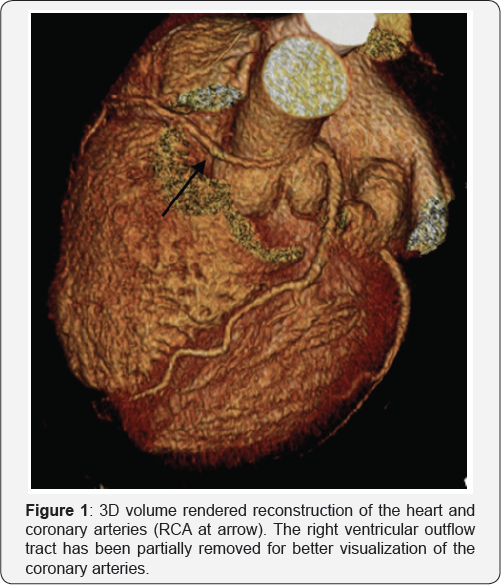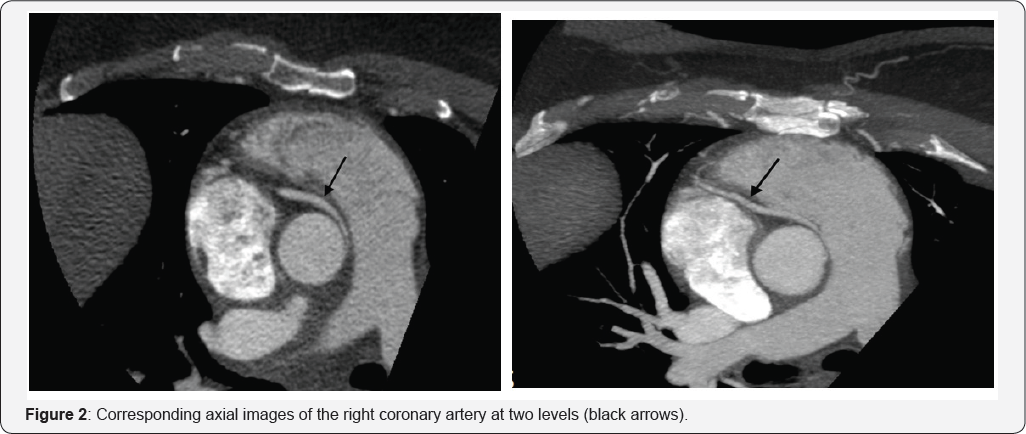Anomalous Right Coronary Artery Origin
Solomon W Bienstock1, Haneen Ali2 and Benjamin T Galen3*
1Internal Medicine Residency Program, Mount Sinai School of Medicine, USA
2Department of Radiology, Albert Einstein College of Medicine and Montefiore Medical Center, USA
3Department of Internal Medicine, Albert Einstein College of Medicine and Montefiore Medical Center, USA
Submission: July 06, 2017; Published: July 26, 2017
*Corresponding author: Benjamin T Galen, Department of Internal Medicine, Albert Einstein College of Medicine and Montefiore Medical Center, Bronx, New York, USA, Tel: 718-904-2400; Fax: 718-904-2827; Email: BGalen@montefiore.org
How to cite this article: Bienstock SW, Ali H, Galen BT. Anomalous Right Coronary Artery Origin. J Cardiol & Cardiovasc Ther 2017; 6(4): 555693. DOI: 10.19080/JOCCT.2017.06.555693.
Keywords
Keywords: Coronary artery anomalies; Cardiac surgery; Chest pain
Case Report
A 59-year-old woman with a history of hypertension and mild asthma was brought to the emergency department complaining of acute onset chest pain. Electrocardiogram en-route by EMS showed ST-segment elevations in inferior leads, which normalized on arrival to the emergency department thirty minutes later. Initial serum troponin-T was 0.12ng/ml (reference range: 0.0-0.1ng/ml). Coronary angiography revealed a suspected culprit, apical "wraparound" distal LAD stenosis with vasospasm and a difficult to engage right coronary artery (RCA) with 40% ostial stenosis. Her symptoms improved with intravenous nitroglycerin. Coronary computed tomography angiography showed an anomalous RCA arising from a separate origin in the left sinus of valsalva, with an "intramural" (within the wall of the aorta) and "inter-arterial" course (between the aorta and pulmonary artery) (Figure 1 & 2). Given that the patient's EKG findings and presentation could also have been due to RCA compression and that the inter-arterial course of an anomylous RCA has historically been associated with a poor prognosis (even sudden cardiac death), she was referred for surgery [1,2]. The patient did well with a single vessel bypass of the RCA with a saphenous vein graft without recurrent chest symptoms.


References
- Angelini P (2007) Coronary artery anomalies: an entity in search of an identity. Circulation 115(10): 1296-1305.
- Krasuski R, Magyar D, Hart S, Kalahasti V, Lorber R, et al. (2011) LongTerm outcome and impact of surgery on adults with coronary arteries originating from the opposite coronary cusp. Circulation 123(2): 154162.






























